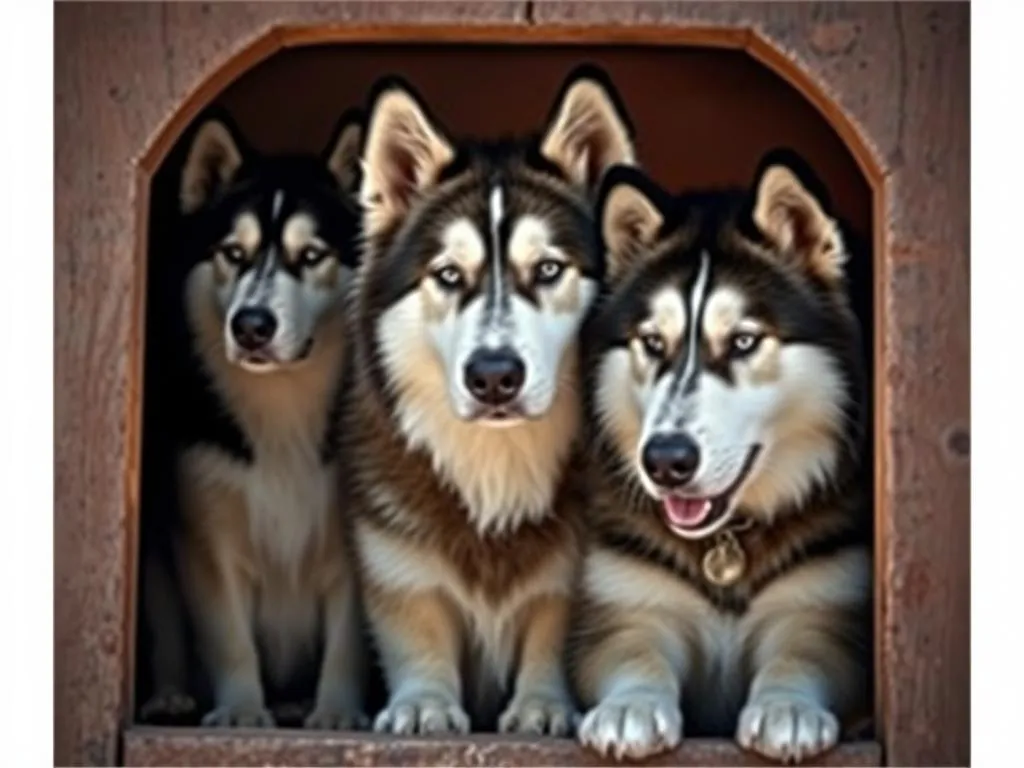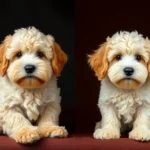
Introduction
The Alaskan Malamute is a majestic and powerful breed known for its strength, endurance, and friendly disposition. Originating from the Arctic regions, these dogs were initially bred for heavy hauling and as companions for the Inuit people. Understanding the shedding patterns of this breed is crucial for potential and current owners, as it significantly impacts the overall dog ownership experience. This article aims to provide comprehensive information about shedding in Alaskan Malamutes, helping you navigate the joys and challenges that come with their striking coat.
Understanding Alaskan Malamutes
Breed Overview
The Alaskan Malamute traces its roots back thousands of years, making it one of the oldest Arctic sled dog breeds. These dogs were specifically developed to pull heavy sleds over long distances, showcasing their incredible strength and stamina. With a robust build, a broad head, and distinctive erect ears, the Alaskan Malamute is both impressive and striking.
In terms of personality, Malamutes are known for their friendly and affectionate nature. They are social animals that thrive on companionship and often form strong bonds with their families. However, due to their working dog heritage, they require regular exercise and mental stimulation to keep them happy and healthy.
Coat Characteristics
The Alaskan Malamute’s coat is one of its most defining features, consisting of a double-layered structure. The outer layer, known as guard hairs, is coarse and water-resistant, while the undercoat is soft and dense, providing insulation against harsh weather conditions. This unique coat allows the Malamute to thrive in extremely cold temperatures, offering protection from the elements.
Understanding the composition of their coat is essential for managing shedding. The double coat is designed to keep the dog warm in winter and cool during summer, but it also means that regular grooming is necessary to remove loose fur and maintain the coat’s health.
Shedding Patterns in Alaskan Malamutes
Seasonal Shedding
Alaskan Malamutes experience a noticeable shedding cycle, primarily occurring in the spring and fall. During these times, they “blow” their undercoat in preparation for changing seasons. This process can result in significant fur loss, often leaving clumps of fur around the house.
Several factors influence shedding frequency, including climate, overall health, and hormonal changes. Dogs living in warmer climates might shed more frequently, as they adapt to the heat. Additionally, changes in daylight hours can trigger shedding cycles, as Malamutes are sensitive to seasonal changes.
Year-Round Shedding
While seasonal shedding is quite pronounced, it’s important to note that Alaskan Malamutes also shed year-round. This shedding is typically less intense but still noticeable. Compared to other breeds, Malamutes tend to shed more due to their heavy double coat. It’s essential for owners to be prepared for continuous fur management, even outside of the peak shedding seasons.
Factors Influencing Shedding
Health and Nutrition
The health and nutrition of an Alaskan Malamute significantly affect their coat condition and shedding patterns. A balanced diet rich in essential fatty acids, vitamins, and minerals can improve coat health and reduce excessive shedding. On the other hand, health issues such as allergies, skin conditions, or hormonal imbalances can lead to increased shedding.
Regular vet check-ups are crucial for identifying potential health concerns that may impact shedding. Owners should be aware of any changes in their dog’s coat or skin and consult a veterinarian if they notice anything unusual.
Grooming Practices
Effective grooming practices are vital in managing shedding in Alaskan Malamutes. Regular grooming helps remove loose fur, dirt, and debris while promoting a healthy coat. Recommended grooming tools include slicker brushes, de-shedding tools, and metal combs.
For optimal results, owners should establish a grooming schedule. During peak shedding seasons, more frequent brushing—at least two to three times a week—can help manage fur loss. Bathing should be done sparingly, as overbathing can strip natural oils and lead to skin issues.
Environmental Factors
The environment in which your Alaskan Malamute lives can also influence shedding patterns. High temperatures and humidity can exacerbate shedding, while a dry climate may result in drier skin and increased fur loss. Additionally, indoor allergens, such as dust and pollen, can impact your dog’s coat and lead to more frequent shedding.
Owners should consider their living conditions and adjust grooming and care practices accordingly to mitigate the effects of the environment on their dog’s shedding.
Managing Shedding in Alaskan Malamutes
Grooming Tips
To reduce shedding in Alaskan Malamutes, try implementing the following grooming practices:
- Regular Brushing: Brush your Malamute at least once a week, increasing frequency during shedding seasons. This helps remove loose fur and prevents matting.
- Use the Right Tools: Invest in quality grooming tools, such as a de-shedding brush or an undercoat rake, which can effectively remove dead hair.
- Bathing: Bathe your Malamute every few months, or as needed, using a gentle dog shampoo that won’t strip the coat of its natural oils.
Home Care Solutions
Managing dog hair in the home is an ongoing task for Alaskan Malamute owners. Here are some effective strategies:
- Vacuum Regularly: Use a vacuum cleaner designed for pet hair, which can effectively lift fur from carpets and upholstery.
- Wash Fabrics: Regularly wash dog blankets, slipcovers, and other fabrics to minimize the accumulation of hair.
- Furniture Care: Consider using furniture covers to protect your sofas and chairs from dog hair. This can make cleaning easier and keep your home looking tidy.
Professional Grooming Services
While regular grooming at home is essential, there may be times when you consider professional grooming services. If you’re unsure about how to manage your Malamute’s coat or if your dog has specific grooming needs, a professional groomer can provide expert assistance.
Benefits of hiring a groomer for Alaskan Malamutes include:
- Access to specialized tools and techniques for effective grooming.
- Assistance with tasks like trimming nails and cleaning ears that can be challenging for some owners.
- A thorough grooming session that can help maintain your dog’s coat and reduce shedding significantly.
FAQs about Alaskan Malamute Shedding
Do Alaskan Malamutes shed year-round?
Yes, Alaskan Malamutes do shed year-round. While they have specific shedding cycles in the spring and fall, they will consistently lose hair throughout the year. Owners should be prepared for ongoing fur management.
How much do they shed compared to other breeds?
In comparison to other breeds, Alaskan Malamutes tend to shed more due to their thick double coat. Breeds like Labrador Retrievers and Siberian Huskies also shed, but the Malamute’s shedding is often more pronounced during seasonal changes due to its larger size and coat density.
Is there anything that can be done to reduce shedding?
Yes, effective management strategies can significantly reduce shedding in Alaskan Malamutes. Regular grooming, a balanced diet, and proper care can help minimize loose fur around the house. Maintaining a clean and comfortable environment will also support your dog’s overall health and coat condition.
Conclusion
Understanding the shedding patterns of Alaskan Malamutes is essential for any prospective or current owner. Their beautiful double coat, while impressive and functional, requires diligent care and maintenance. By implementing regular grooming practices, monitoring health and nutrition, and adapting to environmental factors, you can effectively manage shedding and enjoy the companionship of this remarkable breed.
Owning an Alaskan Malamute comes with its unique joys and challenges, but with the right knowledge and practices, you can ensure a happy and healthy life for both you and your furry friend.









